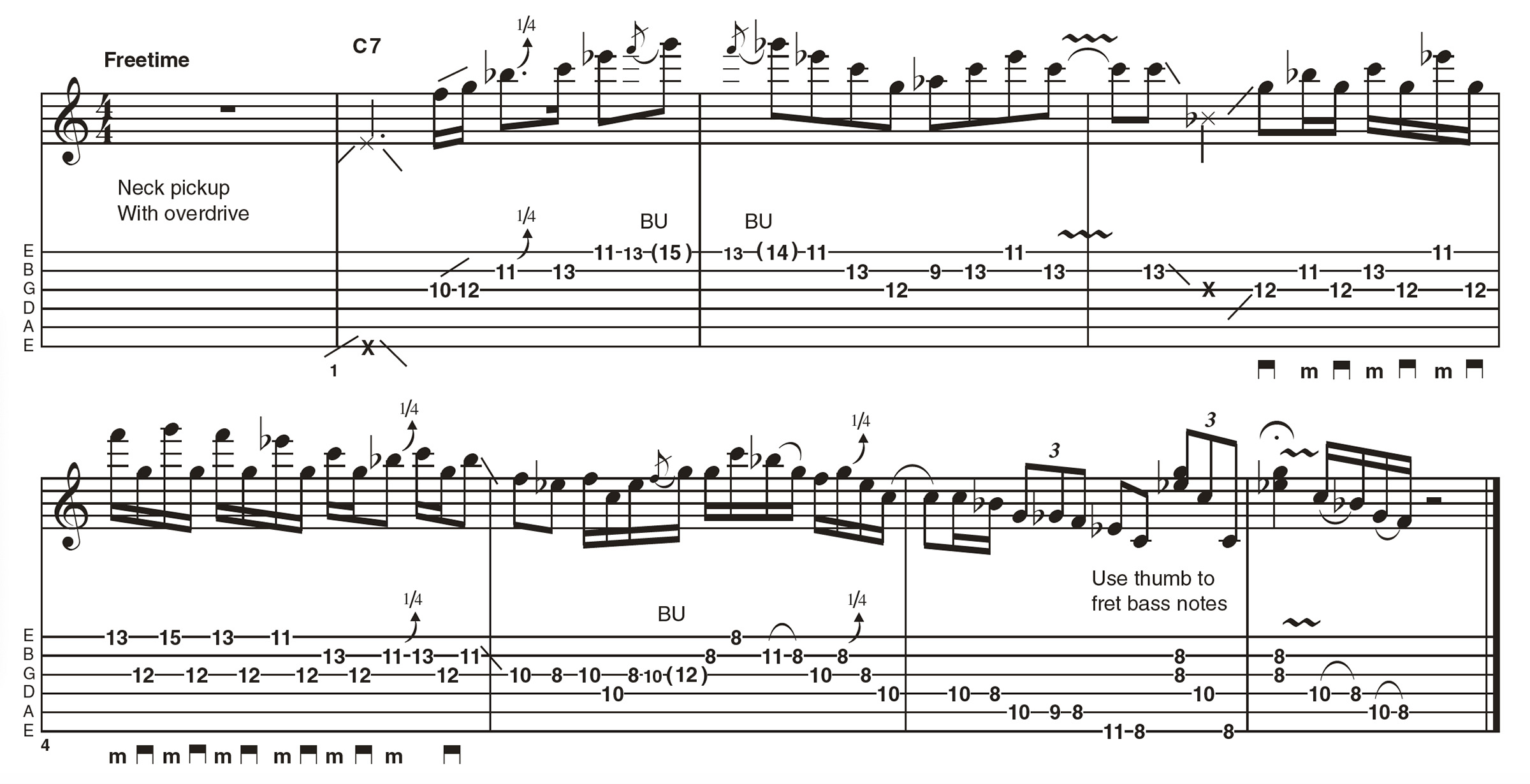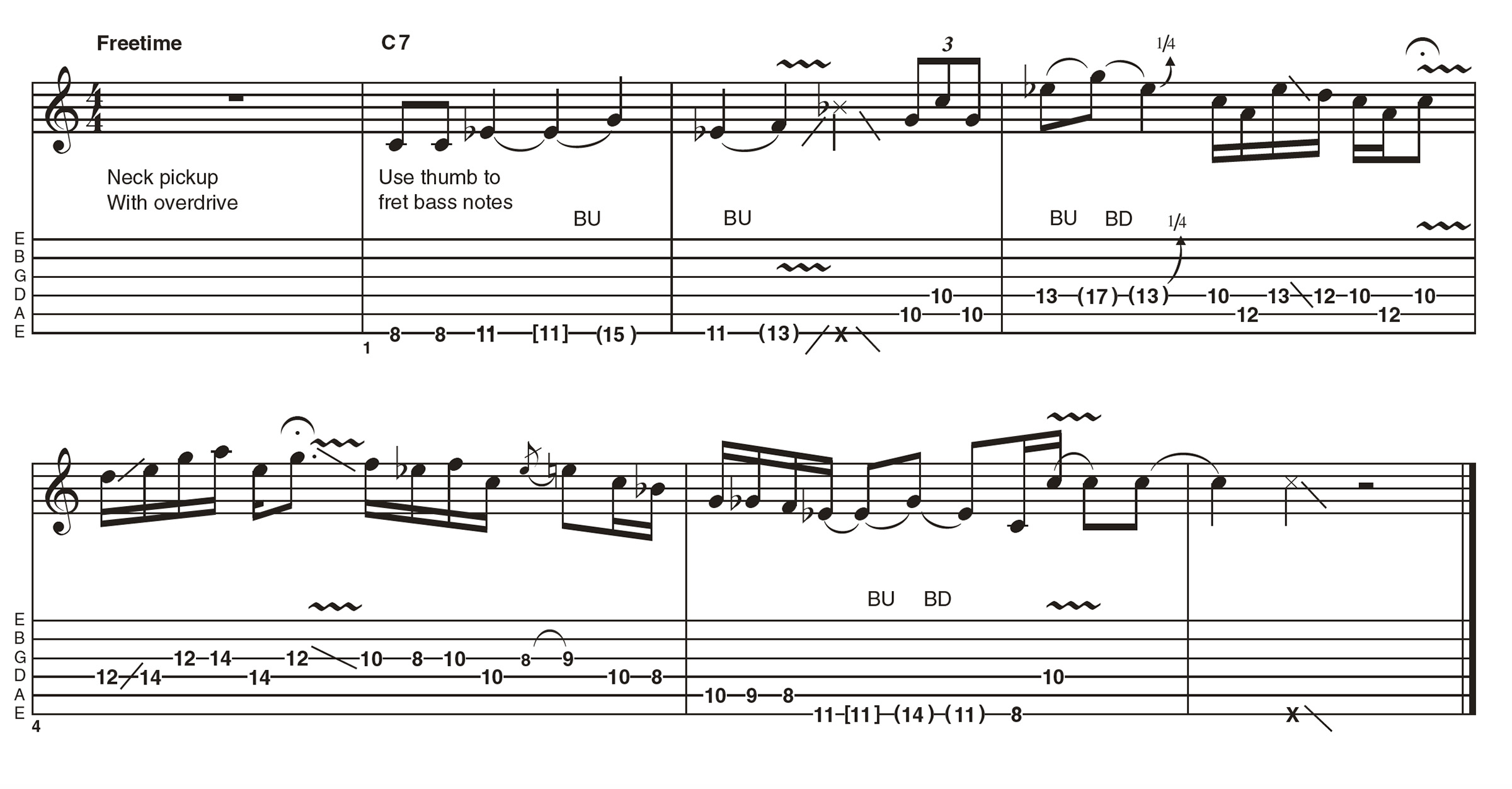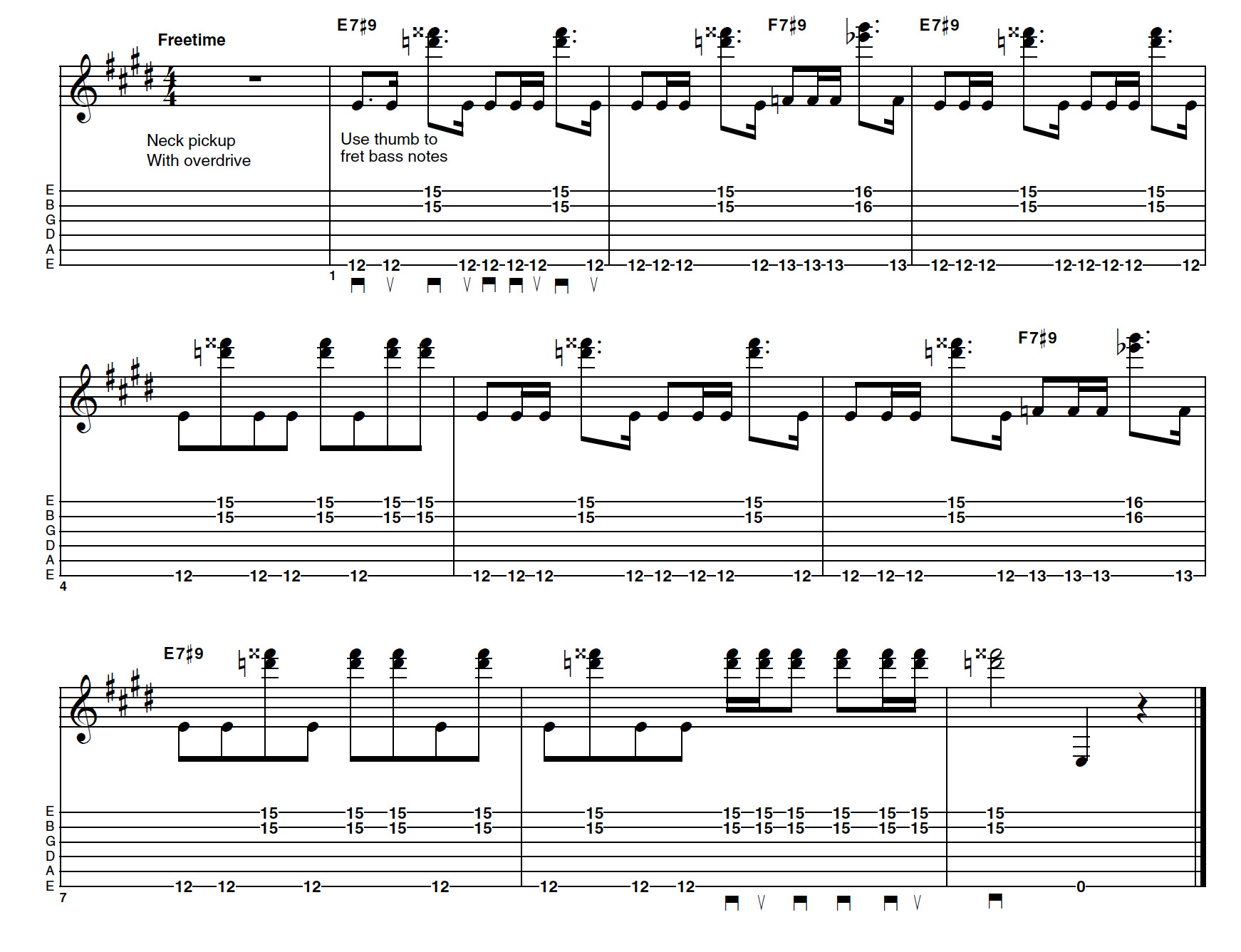Philip Sayce is a modern blues-rock master – from daredevil overbends to tremolo picking with fingers, his licks will take your pentatonic soloing to a new level
Schooled in Stevie Ray Vaughan and Jimi Hendrix, the Canadian Strat sage teaches you some of his most raucous licks in this exclusive lesson

In this feature, we welcome blues-rock master Philip Sayce. Philip has recorded nine albums as a band leader and has worked with many top artists including Jeff Healey and Jimmy Barnes.
In the video, Philip demonstrates all of his licks in free time with no backing track or click used. So we have opted for a 4/4 time signature with all the rhythms being as simple as possible to follow, in an easy-to-use approximation of what’s implied.
In the video performance Philip is in Eb tuning, so all the strings are de-tuned by a semitone (Eb-Ab-Db-Gb-Bb-Eb). However, to keep things simple we have notated the tab fingerings as they appear in the video and the notation is in regular concert pitch. If you tune your guitar down a semitone and play along with the tab and notation, everything will marry up like magic.
Licks 1, 2 and 6 are based around the E7 chord and combine the major pentatonic (E-F#-G#-B-C#) and E minor pentatonic scales (E-G-A-B-D) with some colour tones added here and there.
As the licks are performed without a backing there is no specific harmonic context, so we have used the E major key signature for the E7 type examples and C major for the examples rooted around C. It’s worth noting it’s common practice in the world of blues and rock to mix the major and minor pentatonic scales over a dominant 7 chord.
Throughout his licks Philip demonstrates the use of several common blues-rock guitar techniques including string bending, finger slides and heavy finger vibrato.
The main influences at play here are Jimi Hendrix and Stevie Ray Vaughan, and Philip references these two players as we go. In true Hendrix style, Philip often uses the thumb of his fretting hand to play the notes on the sixth string. This frees up the fingers of the fretting hand to play notes and chords that would usually be quite awkward.
Philip’s phrases are tasteful and well chosen and come from a well-tested framework of major and minor pentatonic fingerings. All of the licks are played with the plectrum, but the picking fingers are often also included. If you are new to this concept of ‘hybrid picking’ it is well worth trying, as the fingers provide extra facility when plying licks that involve crossing strings.
The notation contains all of the articulations and phrasing from Philip’s video performance, so we’d recommend taking a close look at the way he fingers and picks the phrases.
Remember, Philip is tuned down a semitone. If you are playing along in concert pitch this can get a little confusing, so tune down a semitone if you can. The Eb tuning also reduces string tension and makes those big bends a little easier to manage. Good luck with these licks and the bends!
Get the tone
Amp Settings: Gain 5, Bass 8, Middle 7, Treble 8, Reverb 4
Philip used his heavily beaten-up vintage Fender Stratocaster for his performance, but of course any electric guitar will work well for his licks. Go for a bright, high-gain modern blues tone, using an American style amp sound or model, if possible.
As Philip likes to do, select your guitar’s neck pickup and experiment to find guitar and amp settings that make the notes sing out, but without too much grit or edginess to the sound. Naturally, a splash of reverb or delay can be added to provide some welcome ambience.
Example 1. Major key ending phrase
Don’t forget, Philip is in Eb tuning on the video. This lick combines some classic major-key phrasing with high neck position string bending. Philip starts each example with a dramatic-sounding muted slide up and down the sixth string. The finger slides help to link the phrases and add extra excitement to the lick.

Example 2. Lead lick with overbending
The Eb tuning slightly reduces string tension which helps when going for larger string bends. The third string also has the lowest tension of all the strings so is a prime target for doing the big five-fret (4th interval) bend at the 13th fret. That said, be sure to warm up before attempting this type of fretboard gymnastics.

Example 3. Pick and fingers lick
In this lick, Philip plays a fast string-skipping lick using the 12th fret of the third string as a pedal tone. The hybrid picking technique makes this type of lick a lot easier to play as it cuts out the need to skip strings fast with the pick.
The pick can concentrate on down picking the 12th fret of the third string, leaving the second finger of the picking hand (m) free to pluck the notes on the second and first strings. Hybrid picking is well worth adding to your technical armoury.

Example 4. Bending the low strings
Although it’s not a particularly common technique, Philip likes the sound of string bending on the wound strings (fourth, fifth and sixth). The technique here is to pull the strings down towards the floor. Large bends like these require a fair bit of finger strength with often one or more used to support the finger doing the bend.

Example 5. Tremolo picking with fingers
For this lick, a double-stop bend is tremolo-picked with the fingers of the picking hand, and not the pick. The technique is the same for each of the double-stop bends so it’s just a case of moving it up the fretboard in the required steps. Don’t dig in too hard at first or the results can be painful!

Example 6. Rhythmic ‘bounce’ strumming
Philip’s final lick is inspired by players like Jimi Hendrix and Stevie Ray Vaughan. As they both did, the thumb of the fretting hand is used to play the notes on the sixth string. This helps to free up the fingers to play the top of the 7#9 chord. It also allows for trills to be added to chords, as Jimi often did.

Get The Pick Newsletter
All the latest guitar news, interviews, lessons, reviews, deals and more, direct to your inbox!
Jon Bishop is a UK-based guitarist and freelance musician, and a longtime contributor to Guitar Techniques and Total Guitar. He's a graduate of the Academy of Contemporary Music in Guildford and is touring and recording guitarist for British rock 'n' roll royalty Shakin’ Stevens.
“There are so many sounds to be discovered when you get away from using a pick”: Jared James Nichols shows you how to add “snap, crackle and pop” to your playing with banjo rolls and string snaps
How to find new approaches to blues soloing – using fingerstyle improv ideas and Roy Buchanan-inspired licks








![Joe Bonamassa [left] wears a deep blue suit and polka-dotted shirt and plays his green refin Strat; the late Irish blues legend Rory Gallagher [right] screams and inflicts some punishment on his heavily worn number one Stratocaster.](https://cdn.mos.cms.futurecdn.net/cw28h7UBcTVfTLs7p7eiLe.jpg)


